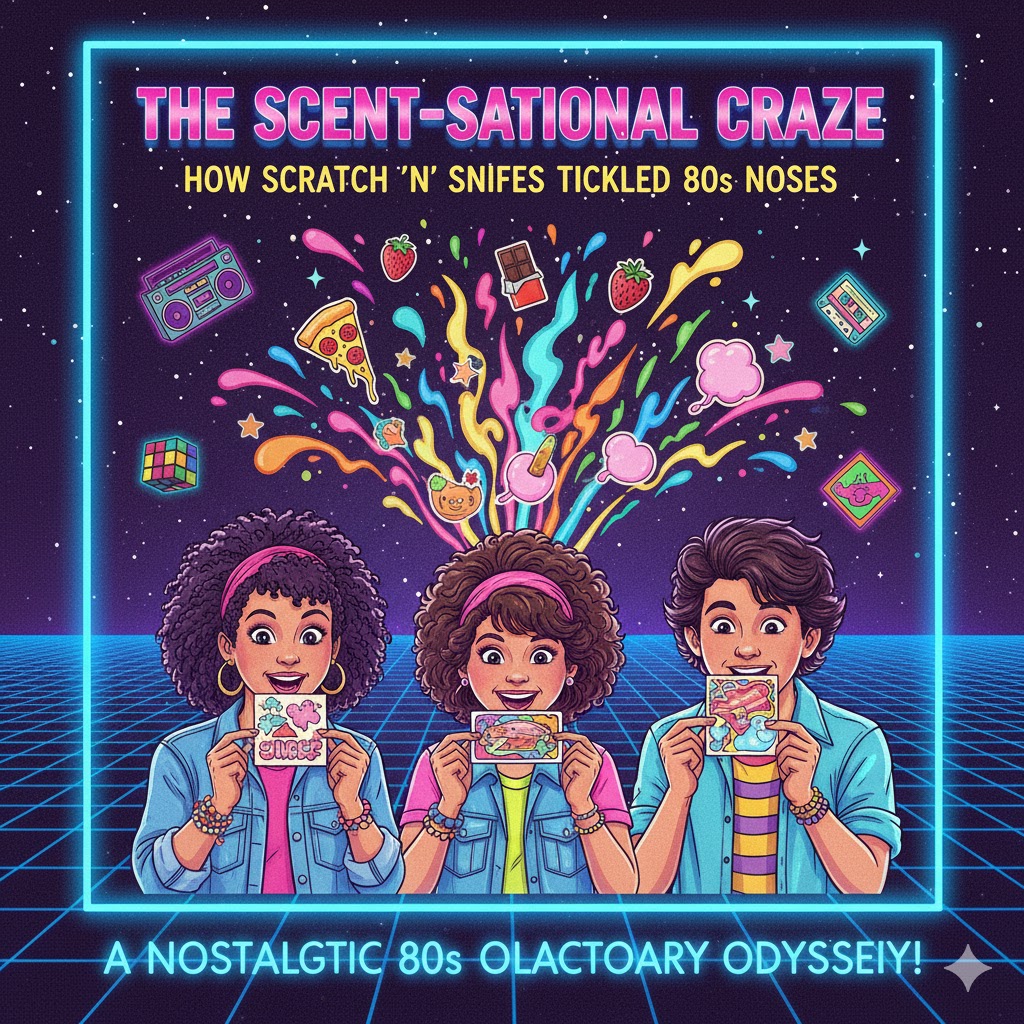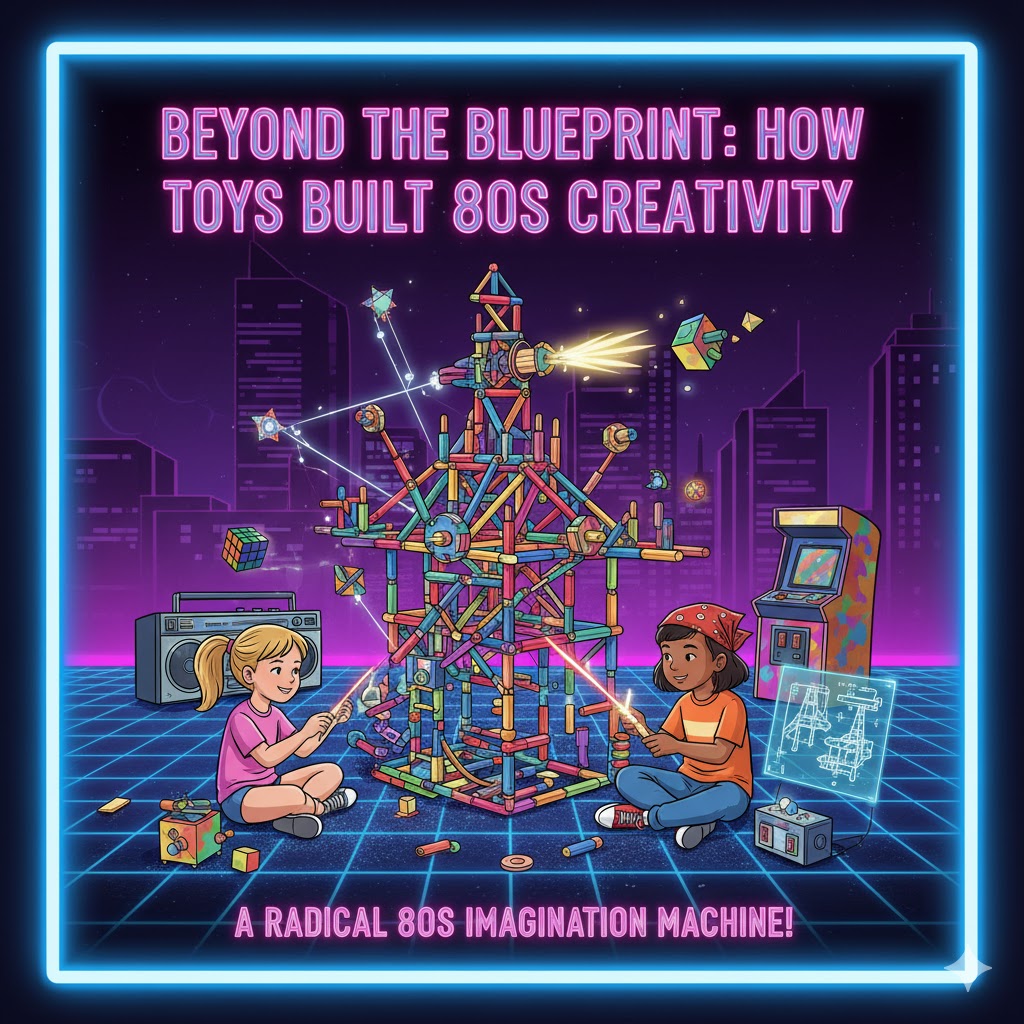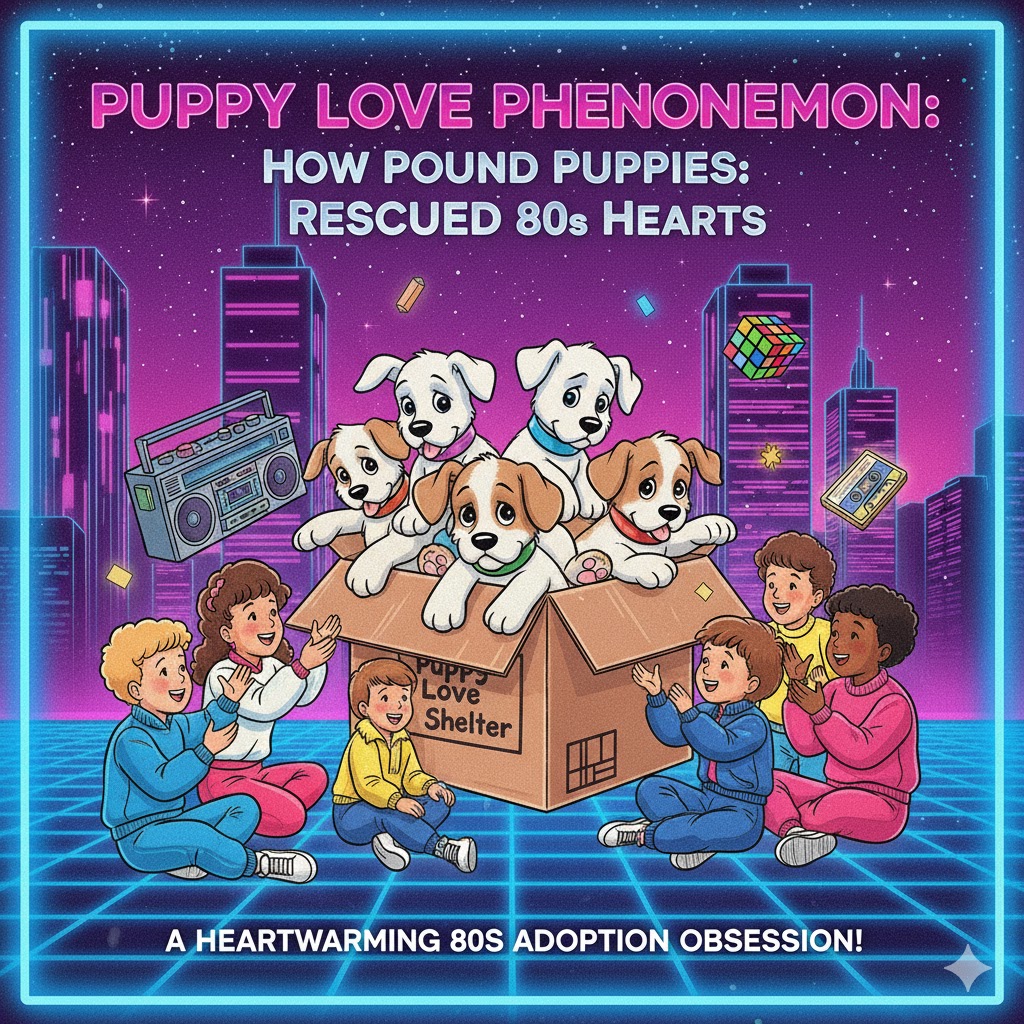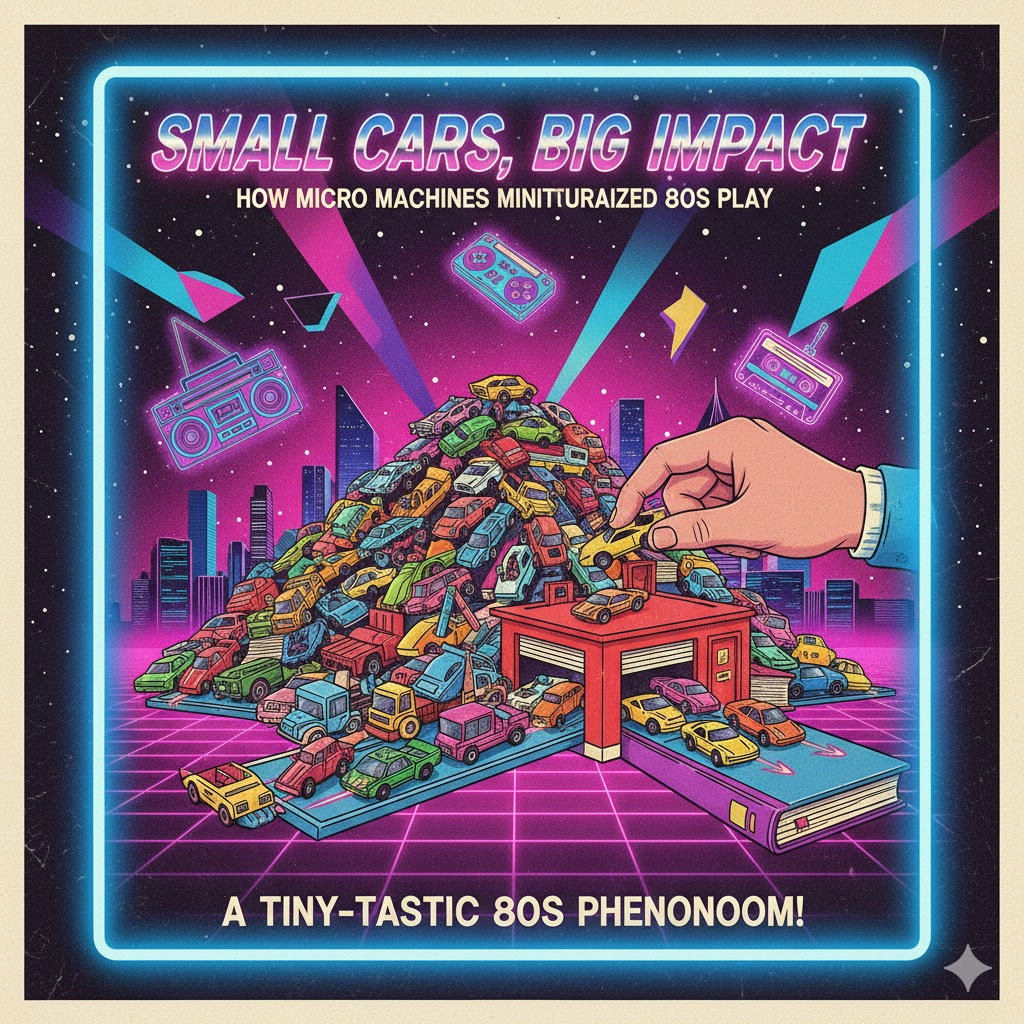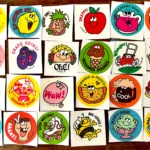 The 1980s were a decade defined by bold colors, playful experimentation, and a fascination with novelty. Among the many fads and trends that shaped childhood experiences during this era, Scratch ‘n Sniff stickers emerged as a uniquely sensory phenomenon. These tiny, aromatic decals offered children a multi-dimensional way to engage with their favorite characters, images, and brands, transforming ordinary paper into a playground of scent, touch, and imagination. Scratch ‘n Sniff stickers were more than a novelty—they became an iconic part of 1980s pop culture, reflecting the decade’s embrace of fun, creativity, and interactive experiences.
The 1980s were a decade defined by bold colors, playful experimentation, and a fascination with novelty. Among the many fads and trends that shaped childhood experiences during this era, Scratch ‘n Sniff stickers emerged as a uniquely sensory phenomenon. These tiny, aromatic decals offered children a multi-dimensional way to engage with their favorite characters, images, and brands, transforming ordinary paper into a playground of scent, touch, and imagination. Scratch ‘n Sniff stickers were more than a novelty—they became an iconic part of 1980s pop culture, reflecting the decade’s embrace of fun, creativity, and interactive experiences.
Scratch ‘n Sniff stickers originated from a relatively simple concept: encapsulating fragrant oils in microcapsules that would release their scent when scratched. Applied to colorful illustrations or popular characters, these stickers combined visual appeal with olfactory stimulation, creating a playful, interactive experience that appealed to children’s curiosity and sense of fun. By adding a sensory layer beyond sight, Scratch ‘n Sniff stickers offered a type of engagement that no other school supply or collectible could match at the time. The excitement of scratching a sticker to reveal its scent became a ritual for kids, one that blended anticipation, surprise, and delight.
The cultural impact of Scratch ‘n Sniff stickers extended well beyond the realm of simple amusement. They became a symbol of 1980s childhood ingenuity and the era’s love for interactive, multi-sensory experiences. School supplies, lunchboxes, sticker albums, and party favors were all transformed by the addition of scented stickers, creating a sense of play and personal expression. Children could collect stickers of their favorite animals, food items, or pop culture icons, trading them with friends and integrating them into their everyday lives. This collectibility, combined with the novelty of scent, made Scratch ‘n Sniff stickers a pervasive cultural phenomenon that went far beyond mere decoration.
The marketing of Scratch ‘n Sniff stickers played a critical role in their popularity. Bright, colorful packaging often featured characters from popular cartoons, movies, or comic books, enticing children to collect entire sets. Advertising emphasized the fun and surprise of the scents, from fruity flavors like strawberry and watermelon to novelty scents such as bubblegum, pizza, or even chocolate. Television commercials, print ads, and in-store displays highlighted the playful, interactive nature of the product, creating anticipation and excitement. Kids were not simply buying stickers—they were purchasing an experience, one that transformed ordinary playtime into a multi-sensory adventure.
One of the most fascinating aspects of Scratch ‘n Sniff stickers was their role in promoting creativity and personal expression. Children could decorate notebooks, school folders, scrapbooks, and letters with scented stickers, making everyday objects feel unique and fun. The combination of visual design and aromatic interaction encouraged imaginative play and storytelling, whether through sticker collections or the creation of miniature scented worlds. These activities reinforced artistic expression, individuality, and social engagement, allowing children to share their tastes, preferences, and creativity with peers.
Scratch ‘n Sniff stickers also intersected with the rise of pop culture icons in the 1980s. Many sticker lines featured beloved characters from cartoons such as Care Bears, Strawberry Shortcake, and My Little Pony. These characters were already deeply embedded in children’s lives through television, toys, and merchandise, and the addition of scent amplified the immersive experience. Kids could interact with their favorite characters in an entirely new way, reinforcing brand loyalty and cultural recognition. The tactile and aromatic dimensions of Scratch ‘n Sniff stickers created a unique, memorable connection that helped cement the popularity of these franchises.
The stickers’ appeal was further amplified by their role as collectibles. Like trading cards, buttons, and small toys, Scratch ‘n Sniff stickers encouraged children to seek out rare or limited editions, trade with friends, and complete sets. This collectible aspect transformed a simple novelty into a social phenomenon, fostering interaction, competition, and a sense of accomplishment. Children could showcase their sticker collections, exchange scents, and bond over shared interests, creating a community of enthusiasts who valued the stickers both as objects and as tools for social engagement.
Scratch ‘n Sniff stickers were also a gateway to sensory education and awareness. By linking scent to visual cues, children learned to recognize and associate fragrances with objects or characters, enhancing cognitive connections between senses. The stickers encouraged experimentation—scratching, sniffing, and mixing scents—which promoted curiosity and exploration. While subtle, these educational benefits complemented the playful, imaginative aspects of the product, making Scratch ‘n Sniff stickers both entertaining and developmentally enriching.
The design and production of Scratch ‘n Sniff stickers reflected the technological and manufacturing innovations of the 1980s. The use of microencapsulation to safely contain scents and ensure durability showcased a sophisticated approach to product development. The technology allowed stickers to retain their fragrance for months, ensuring that the experience of scratching and sniffing remained fresh. This innovation highlighted the decade’s fascination with novelty and experimentation, demonstrating how creative engineering could transform everyday objects into sources of wonder and delight.
Scratch ‘n Sniff stickers also played a role in shaping the aesthetics of 1980s childhood spaces. Desks, lockers, notebooks, and lunchboxes became vibrant, aromatic landscapes where visual art, storytelling, and sensory play converged. Children used the stickers to personalize their belongings, turning mundane school supplies into statements of identity, taste, and affiliation. This personalization reinforced broader cultural trends of self-expression and individuality, hallmarks of the 1980s ethos, where color, design, and novelty were central to defining personal style.
The marketing strategies surrounding Scratch ‘n Sniff stickers also demonstrated the power of cross-media synergy. Many sticker lines were tied to television shows, movies, and other merchandising campaigns, creating a cohesive experience that extended from media consumption to tangible play. The interactivity of scratching and sniffing added depth to these experiences, transforming passive media engagement into active participation. Children could reenact favorite scenes, imagine new adventures, and immerse themselves in the worlds of beloved characters, creating a cultural ecosystem that linked toys, media, and imagination.
Scratch ‘n Sniff stickers were also emblematic of the 1980s’ fascination with novelty and interactivity. The decade saw the rise of sensory toys, interactive games, and hands-on experiences that emphasized engagement and experimentation. By combining fragrance with visual appeal, Scratch ‘n Sniff stickers captured the imagination in ways that traditional toys could not. They created memorable, repeatable experiences that could be enjoyed alone or shared with friends, fostering both personal and social engagement in a format that was portable, affordable, and endlessly enjoyable.
The social impact of Scratch ‘n Sniff stickers was significant. Children often exchanged stickers with friends, shared favorite scents, and compared collections, turning a solitary activity into a communal one. This social dynamic reinforced peer connections, communication skills, and cooperative play. The stickers became a medium for storytelling, negotiation, and friendship-building, creating a cultural phenomenon that extended beyond the product itself. Through these interactions, Scratch ‘n Sniff stickers helped define the social contours of 1980s childhood, embedding themselves in the memories and experiences of a generation.
Scratch ‘n Sniff stickers also reflected broader marketing and consumer trends of the decade. Companies increasingly sought to create multi-sensory, interactive experiences that would capture attention in a crowded marketplace. The success of these stickers demonstrated the effectiveness of combining novelty, collectibility, and emotional engagement. By linking products to tangible experiences—scent, touch, and visual appeal—brands could create deeper connections with young consumers, encouraging loyalty, repeat purchases, and cultural resonance. Scratch ‘n Sniff stickers exemplified this strategy, turning a simple product into a cultural touchstone.
The legacy of Scratch ‘n Sniff stickers extends beyond the 1980s. Adults who grew up enjoying these aromatic novelties often recall the excitement of scratching to release a scent, the thrill of collecting rare or themed stickers, and the imaginative play that accompanied each interaction. Nostalgia for these toys persists, influencing retro marketing campaigns, collector communities, and the revival of scented novelties in contemporary toy lines. The emotional and sensory impact of Scratch ‘n Sniff stickers ensures that they remain emblematic of the decade, celebrated as a quintessential part of 1980s pop culture.
Ultimately, the significance of Scratch ‘n Sniff stickers in 1980s pop culture lies in their ability to combine novelty, interactivity, and collectibility. They offered children a unique sensory experience that went beyond traditional play, integrating visual art, fragrance, and storytelling into everyday objects. By encouraging creativity, imagination, and social interaction, these stickers became more than toys—they were cultural icons, representing the playful, innovative, and expressive spirit of the 1980s.
For those who grew up scratching stickers in the margins of notebooks, trading favorite scents with friends, or creating elaborate aromatic collages, Scratch ‘n Sniff stickers evoke a vivid and nostalgic connection to childhood. They were not only a source of entertainment but also a vehicle for imagination, friendship, and self-expression. Their enduring appeal demonstrates the power of multi-sensory engagement in shaping cultural memory and creating products that resonate across decades.
The story of Scratch ‘n Sniff stickers is a testament to the ingenuity and playfulness of 1980s childhood. By turning ordinary paper into a gateway for scent, interaction, and imagination, they captured the essence of a decade obsessed with novelty, creativity, and sensory engagement. These small, fragrant stickers left a massive imprint on the cultural landscape, offering a uniquely memorable way for children to experience fun, friendship, and self-expression.
Scratch ‘n Sniff stickers remain emblematic of the 1980s because they were more than just a product—they were a cultural experience. Their combination of visual appeal, aromatic delight, and imaginative potential made them an iconic part of childhood, influencing play, social interaction, and media consumption. Through these tiny scented wonders, children were introduced to the magic of multi-sensory engagement, a concept that continues to influence toys and novelty products to this day.
The lasting legacy of Scratch ‘n Sniff stickers lies in their ability to engage multiple senses, spark creativity, and foster social bonds. They demonstrated that even a small, seemingly simple product could capture the imagination of an entire generation, becoming a symbol of 1980s fun, innovation, and cultural vibrancy. Scratch ‘n Sniff stickers were, and remain, a testament to the playful ingenuity of a decade that celebrated novelty, interaction, and the joy of childhood imagination.
